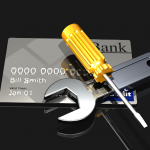Here’s what you need to know and what you can do.
The latest statistics released by the Department of Education show that in 2018, 99% of borrowers who applied for public service student loan forgiveness were rejected.
Here are the highlights of that report:
- 53,749 student loan borrowers submitted 65,500 applications for public service loan forgiveness.
- Approximately 58,000 of those applications were processed, with the remainder in a pending state.
- Of the 58k, more than 73% of applications were denied due to borrowers not meeting the program requirements. Reasons for denial included ineligible student loans, not making 120 qualifying payments or not having qualifying employment.
- Another 26% of applicants were denied due to missing or incomplete employment certification forms.
How many borrowers were approved for forgiveness?
According to the same report, only a paltry 610 applications were approved and 338 borrowers receiving $21.1 million in public service loan forgiveness. In the history of the program, approximately 640 borrowers have received forgiveness out of a cumulative 132,000 processed applications. That is less than 0.5%.
That is a shockingly low number, but getting public service loan forgiveness is not so simple. The Public Service Loan Forgiveness Program forgives federal student loans for borrowers who meet the following prerequisites:
- Employed in an eligible federal, state or local public service job
- Be employed full time, more than 30 hours per week
- Make 120 eligible payments on time
A majority of the of applications were rejected because of incomplete information given, or not meeting the program prerequisites. Here are a few things for you to know when applying for Public Service Loan Forgiveness.
Filling out the Employment Certification Form
Applicants have to fill out the Employment Certification Form, which has to be submitted to the Department of Education when they begin working in an eligible public service job. They should also re-submit the form annually to stay on track in the program, and also when they switch jobs.
Enroll in an IDR Plan
Only federal student loans are considered for public service loan forgiveness. Applicants are required to apply into an income-driven repayment (IDR) plan, and make a majority of their 120 required payments while enrolled.
Federal Loan Consolidation
If you have Perkins loans, or Federal Family Education loans (FFEL), it would be beneficial to consolidate all these loans into a Direct Consolidation Loan, as that is the only way for those loans to be eligible for public service loan forgiveness.
Student Loan Refinance
If you have private student loans, you should consider refinancing them to lower your interest rate. Here’s a payment calculator to see how much you can save by refinancing your private student loans.
Take Control Today
The situation might seem bleak now, but now you know the program requirements and the common shortfalls that plague applicants. Make an action plan today to get yourself debt-free. And if you need help, the Financial Helpers are just a call away




